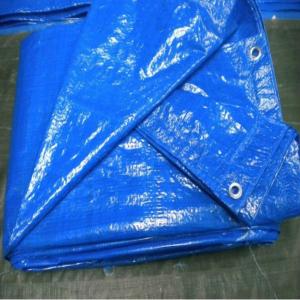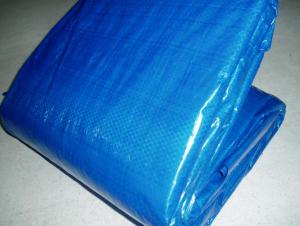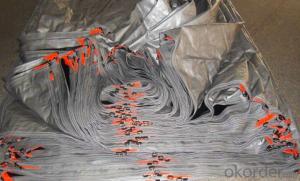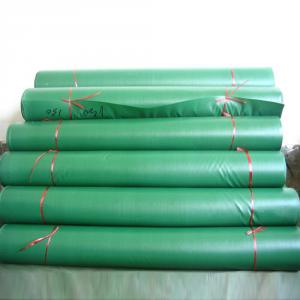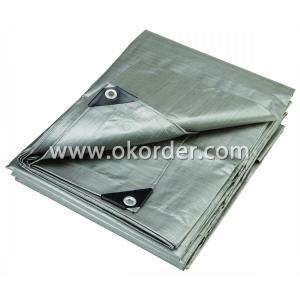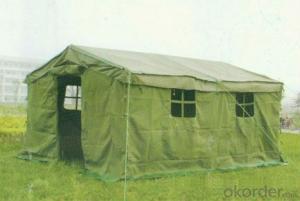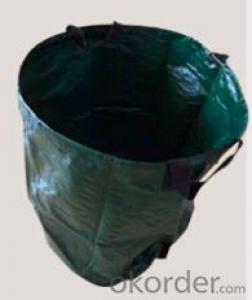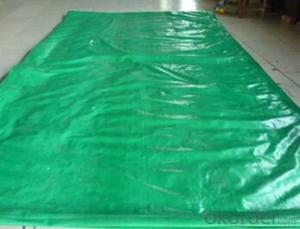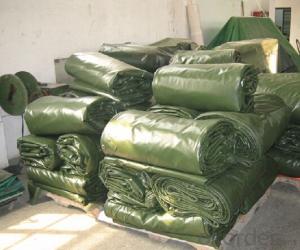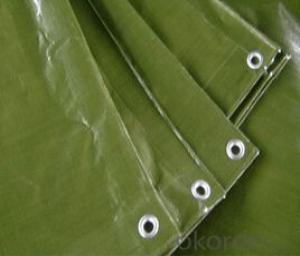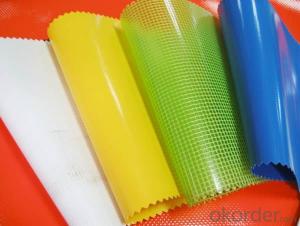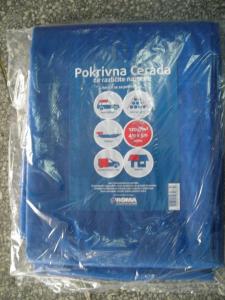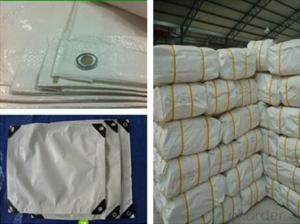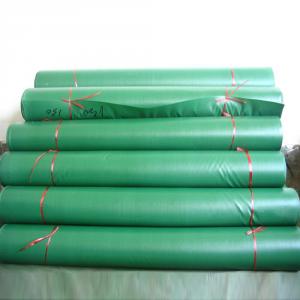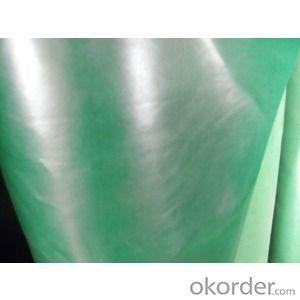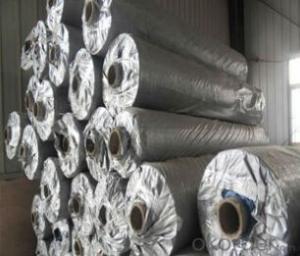Striped Tarpaulin
Striped Tarpaulin Related Searches
Pe Insulation The Biggest Pickup Truck Truck Car Small Moving Truck Commercial Truck Shelving Highest Rated Pickup Truck Pe Geomembrane Dayun Truck Silver Tarpaulin Striped TarpaulinHot Searches
Striped Tarpaulin Supplier & Manufacturer from China
Okorder.com is a professional Striped Tarpaulin supplier & manufacturer, offers integrated one-stop services including real-time quoting and online cargo tracking. We are funded by CNBM Group, a Fortune 500 enterprise and the largest Striped Tarpaulin firm in China.Hot Products
FAQ
- Stainless steel scrap can be used in the production of industrial machinery by melting it down and using it as a raw material for manufacturing various components such as gears, shafts, valves, and pumps. This scrap metal can be recycled and reprocessed to meet the required specifications, making it a cost-effective and sustainable option for the production of industrial machinery.
- There are several best practices that can be implemented to minimize stainless steel scrap generation. These practices not only reduce waste but also contribute to cost savings and environmental sustainability. Here are some of the most effective strategies: 1. Proper Planning and Design: One of the key aspects of minimizing stainless steel scrap is to ensure proper planning and design. This includes accurate measurements, precise specifications, and thorough understanding of the project requirements. By minimizing errors and rework, the generation of scrap can be significantly reduced. 2. Material Optimization: Utilizing the correct stainless steel grade and thickness for a particular application is crucial. This requires careful consideration of factors such as corrosion resistance, strength, and suitability for the intended use. By selecting the appropriate material, excessive scrap due to mismatched specifications can be avoided. 3. Efficient Cutting and Machining Techniques: Implementing efficient cutting and machining techniques can help optimize material usage and minimize scrap generation. Advanced technologies like laser cutting, waterjet cutting, or CNC machining provide precise cuts, reducing the need for additional finishing or reworking. 4. Proper Handling and Storage: Ensuring proper handling and storage of stainless steel materials is essential to prevent damage or contamination. This includes using appropriate lifting equipment, protective packaging, and suitable storage conditions. By avoiding damage, the need for scrapping material due to quality issues is minimized. 5. Effective Inventory Management: Maintaining an accurate inventory management system is crucial for minimizing stainless steel scrap generation. Regularly monitoring stock levels, identifying excess or obsolete materials, and utilizing a just-in-time approach can help prevent overstocking and minimize the risk of material becoming unusable. 6. Continuous Improvement and Lean Manufacturing: Adopting a continuous improvement mindset and lean manufacturing principles can significantly contribute to reducing scrap generation. By identifying and eliminating waste throughout the production process, such as excessive handling, unnecessary steps, or inefficient setups, the overall productivity and material utilization can be improved. 7. Employee Training and Awareness: Educating employees about the importance of minimizing scrap generation and providing training on proper handling and machining techniques is essential. By fostering a culture of waste reduction and involving employees in the improvement process, the entire organization can contribute to minimizing scrap. Implementing these best practices requires a holistic approach and collaboration between various stakeholders, including designers, engineers, operators, and management. By incorporating these strategies, companies can not only minimize stainless steel scrap generation but also enhance their competitiveness and sustainability in the long run.
- There are several ways in which stainless steel scrap can be utilized in the production of precision instruments. Firstly, manufacturers can melt down the scrap and use it as a raw material in the manufacturing process, reducing their reliance on new stainless steel and saving costs. In addition, the scrap can be transformed into various shapes and sizes to create components or parts for precision instruments, such as screws, bolts, or small intricate parts. These are essential for the proper functioning of the instruments. Furthermore, stainless steel scrap can serve as a testing material during the development and prototyping stages. By using scrap instead of new stainless steel, manufacturers can minimize expenses and test the instruments' functionality, durability, and performance before mass production. Moreover, the scrap can be used for repairs and maintenance of precision instruments. When these instruments experience wear and tear, using stainless steel scrap for replacement parts can be a cost-effective solution, ensuring the instruments remain in optimal working condition. Additionally, the recycling of stainless steel scrap can indirectly contribute to the production of precision instruments. By repurposing the scrap into other stainless steel products, the need for new stainless steel production is reduced, conserving resources and minimizing environmental impact. Overall, the utilization of stainless steel scrap in the production of precision instruments offers several benefits, including cost savings, reduced reliance on new materials, enhanced testing capabilities, and sustainability.
- Some safety considerations in handling stainless steel scrap include wearing appropriate personal protective equipment (PPE) such as gloves, goggles, and protective clothing to prevent cuts, burns, and eye injuries. It is important to handle the scrap with caution to avoid sharp edges and potential puncture wounds. Additionally, proper lifting techniques should be used to prevent back injuries. It is also important to be aware of any hazardous materials or chemicals that may be present on or within the scrap, and take appropriate measures to handle and dispose of them safely.
- Stainless steel scrap possesses numerous alternative applications, rendering it a valuable asset across multiple sectors. One prevalent utilization involves recycling the scrap to fabricate fresh stainless steel products. Through the process of melting down the stainless steel scrap, it can be transformed into new sheets, pipes, or alternative forms of stainless steel materials. This practice not only aids in the preservation of natural resources but also diminishes the energy required for stainless steel production. The construction industry also benefits from the alternative utilization of stainless steel scrap. It can be employed to fashion reinforcement bars, structural beams, or even ornamental elements like handrails or facades. The durability and corrosion resistance of stainless steel scrap make it an ideal material for construction projects. Moreover, stainless steel scrap can be repurposed for the manufacturing of kitchen appliances, utensils, or cutlery. Owing to its hygienic properties and stain resistance, stainless steel remains a popular choice for these products. By incorporating stainless steel scrap into their production processes, manufacturers can produce top-quality kitchen items while simultaneously minimizing waste and environmental impact. Additionally, the automotive industry can make effective use of stainless steel scrap. Upon melting, it can be transformed into various components such as exhaust systems, engine parts, or body panels. The strength, heat resistance, and aesthetic appeal of stainless steel render it a preferred material in automotive applications. Furthermore, stainless steel scrap can be transformed into art and decorative objects. Artists and designers can creatively repurpose the scrap to produce sculptures, jewelry, or other distinctive pieces. This not only exemplifies creativity but also advances sustainability by breathing new life into discarded materials. To conclude, stainless steel scrap offers numerous alternative uses, including recycling for the creation of new stainless steel products, construction applications, manufacturing kitchen appliances and automotive components, as well as repurposing for artistic and decorative purposes. These alternative applications aid in waste reduction, resource conservation, and the promotion of sustainability across various industries.
- Yes, stainless steel scrap can be used in the automotive industry. Stainless steel is a highly durable and corrosion-resistant material, making it suitable for various automotive applications. It is commonly used in the manufacturing of exhaust systems, fuel tanks, body panels, and other components that require strength and resistance to rust and corrosion. Recycling stainless steel scrap not only helps reduce waste but also provides a cost-effective solution for sourcing raw materials in the automotive industry. By utilizing stainless steel scrap, car manufacturers can contribute to sustainable practices and ensure the longevity and reliability of their products.
- Stainless steel scrap can contribute significantly to a circular economy in several ways. Firstly, stainless steel is a highly durable and long-lasting material, which means that even when it reaches the end of its current use cycle, it can be recycled and repurposed for various applications. This characteristic makes stainless steel scrap an ideal resource for a circular economy. One way stainless steel scrap contributes to a circular economy is through its recycling and remanufacturing processes. By collecting and processing stainless steel scrap, it can be melted down and transformed into new stainless steel products, reducing the need for extracting and refining raw materials. This not only conserves valuable natural resources but also decreases the energy consumption and emissions associated with the production of stainless steel from virgin materials. Moreover, stainless steel scrap can also be used in the production of secondary products or components, further extending its lifespan. For instance, stainless steel scrap can be utilized in the manufacturing of construction materials, automotive parts, household appliances, and even art installations. By incorporating stainless steel scrap into these new products, the circular economy is promoted as it reduces the reliance on primary materials and minimizes waste generation. In addition to recycling and remanufacturing, stainless steel scrap can also be used for repair and refurbishment purposes. When stainless steel products reach the end of their life, the scrap can be collected and used to repair or refurbish similar items. This helps to extend the lifespan of existing products, reducing the demand for new ones and ultimately decreasing the overall environmental impact. Furthermore, stainless steel scrap has economic value, and its collection and processing can generate employment opportunities. As the demand for stainless steel scrap increases, the recycling industry grows, creating jobs in collection, sorting, processing, and manufacturing. This contributes to the local economy and helps build a sustainable and circular economy model. Overall, stainless steel scrap plays a crucial role in the circular economy by reducing the reliance on virgin materials, minimizing waste generation, promoting recycling and remanufacturing, extending the lifespan of products, and creating economic opportunities. By embracing stainless steel scrap as a valuable resource, we can move towards a more sustainable and resource-efficient future.
- Stainless steel scrap can be effectively processed in large-scale recycling facilities through a series of steps that involve sorting, shredding, melting, and refining. Firstly, the stainless steel scrap needs to be sorted based on its composition and grade. This is crucial as different grades of stainless steel have varying amounts of alloying elements, such as nickel and chromium, which determine their properties. Sorting can be done manually or using automated technologies like magnetic separators to separate ferrous and non-ferrous materials. Once sorted, the scrap is then shredded into smaller pieces to facilitate further processing. Shredding can be done using industrial shredders that can handle large volumes of material efficiently. This step not only reduces the size of the scrap but also helps in segregating any impurities or contaminants that might be present. After shredding, the stainless steel scrap is then melted in electric arc furnaces or induction furnaces. These furnaces heat the shredded scrap to high temperatures, allowing it to melt and become molten stainless steel. The molten steel is then refined to remove impurities like carbon, sulfur, and phosphorus through processes like decarburization and dephosphorization. This refining step ensures that the final stainless steel product meets the required quality and specifications. Once the stainless steel is refined, it can be cast into various shapes, such as ingots, billets, or slabs, depending on the intended use. These shapes can be further processed into different products like bars, sheets, or coils through additional steps like rolling, forging, or extruding. In large-scale recycling facilities, it is essential to have efficient and modern equipment like shredders, furnaces, and refining systems to handle the high volumes of stainless steel scrap effectively. Additionally, having a well-designed layout that allows for smooth material flow and segregation can optimize the recycling process. Overall, effective processing of stainless steel scrap in large-scale recycling facilities requires careful sorting, shredding, melting, refining, and shaping steps. By implementing these processes efficiently and utilizing modern equipment, these facilities can maximize the recovery of stainless steel and contribute to a more sustainable and circular economy.

